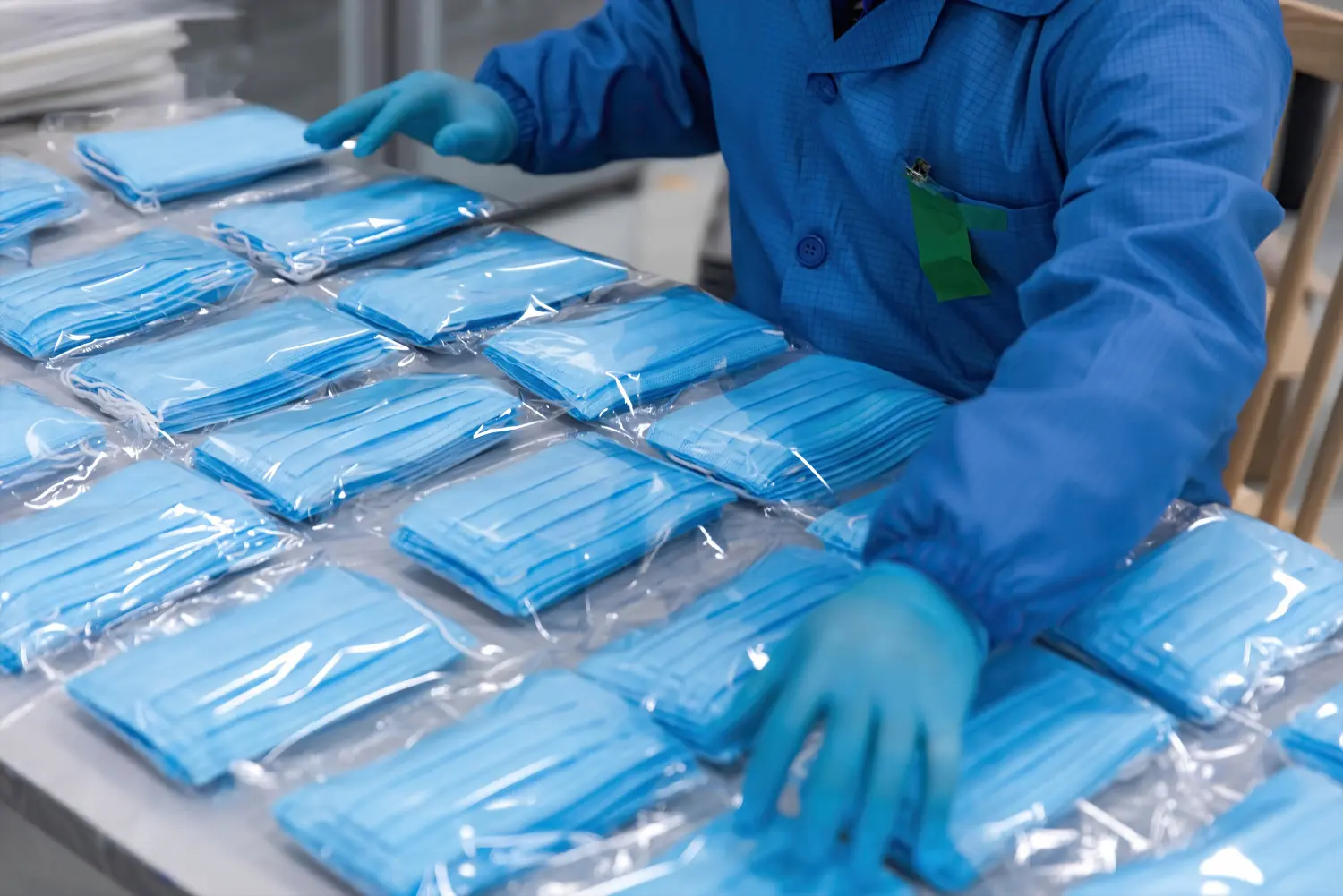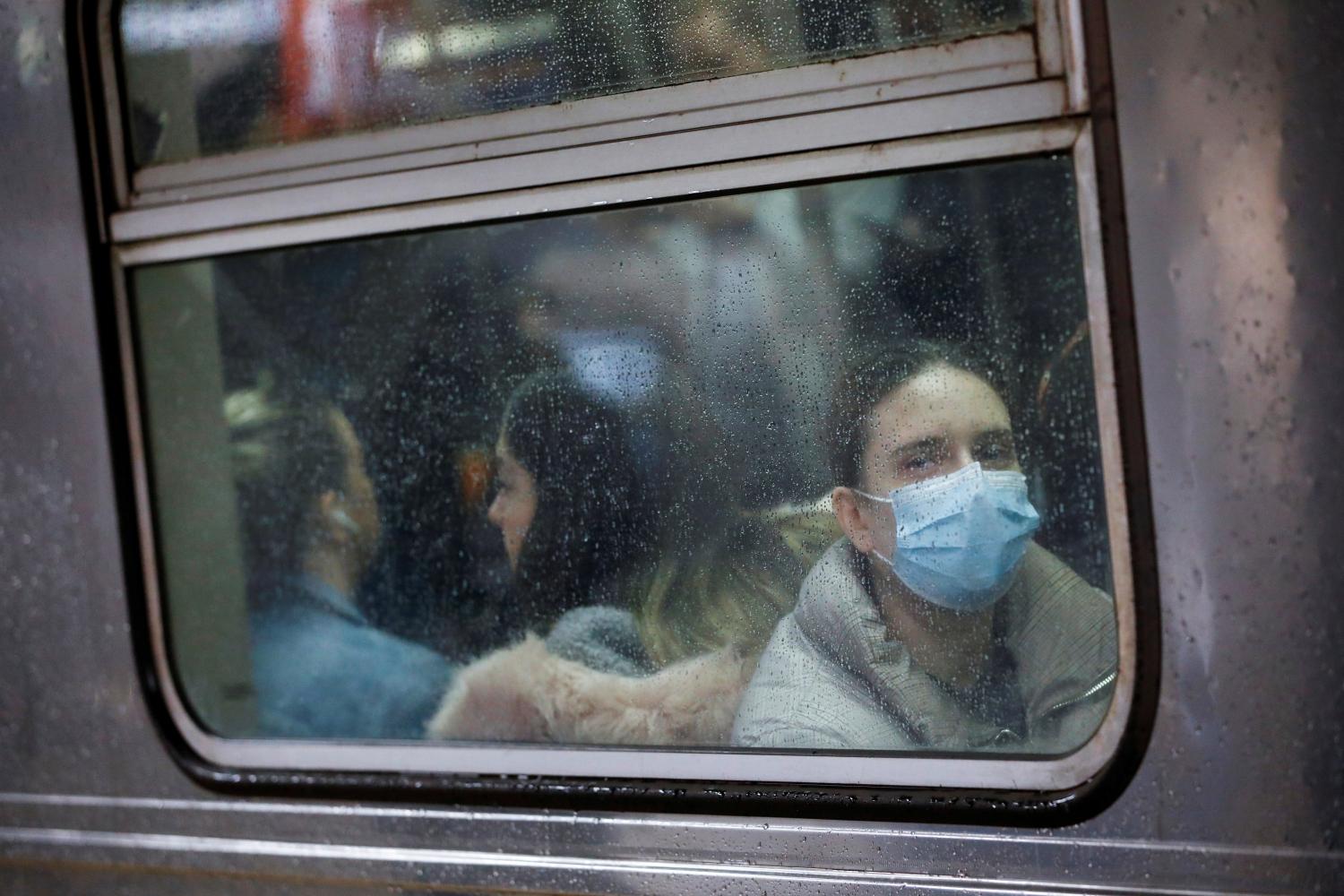This essay is part of the Actionable Ideas for Economic Recovery in American Cities, a feature of the COVID-19 Metro Recovery Watch.
Overview
One of the most common challenges that COVID-19’s frontline workers face has been shortages of personal protective equipment (PPE). This has exposed core weaknesses in a lean global supply chain model that prioritizes costs reduction, just-in-time production, and forecasting strategies that do not typically consider major disruptions such as natural disasters, pandemics, or other geopolitical crises.
Supply chain resilience strategies that localize critical industries and their component supply chains could not only alleviate the weaknesses uncovered during the COVID-19 pandemic, but also increase employment growth across historically well-paying industries and provide economic development opportunities for U.S. regions with the economic fundamentals conducive to advanced manufacturing. To provide one model approach for other cities, this brief captures Central New York’s strategy to better position itself and its core industries to capture new production opportunities and strengthen resiliency in the face of future global disasters.
Challenge
Given the growth Central New York was seeing before the COVID-19 pandemic in sectors key to the region’s economic health (communications equipment, defense, manufacturing, tech, food products, etc.) and due to supply chain weaknesses made apparent in the pandemic’s early days, targeted strategies are needed to strengthen essential industries and their supply chains to make them more resilient and better able to adapt to global disruptions.
The COVID-19 crisis has revealed that supply chains for critical medical products such as PPE quickly led outside of the United States. China is the main supplier for PPE, but given that COVID-19 broke out in China, the country needed to reduce exports of PPE to deal with its own crisis. That meant that local health care providers in the U.S. were reporting significant and immediate supply shortages as the pandemic intensified this spring. The challenges in sourcing PPE are emblematic of supply chain realities in other critical industries, including pharmaceuticals, medical devices, semiconductors, automotive, aerospace, textiles and chemicals, communications, and IT hardware manufacturing.
Even as domestic manufacturers retrofitted operations to produce PPE, the challenge for the U.S government, states, and health care facilities was that they were all bidding against each other to purchase additional PPE from China. Similar situations arose with testing swabs, face shields, and other critical high-volume, low-price PPE commodity goods, as well as testing reagents. In June, New York Lieutenant Governor Kathy Hochul said, “It was an awakening for us; it exposed our vulnerabilities. I don’t ever want to go back there again”.1
Component and capability shortages in the medical supply industry share several common features with other critical industries’ supply chains, including cost of goods and labor, technical expertise, and available turnkey facilities. The United States has an opportunity to leverage industry-led supply chain resiliency strategies to localize advanced manufacturing and transition workers from low-paying retail and service employment into better jobs. The country can create strategic manufacturing industries in central cities and rural areas, connecting individuals who were disproportionally affected by COVID-19 to these high-quality jobs.
In the longer term, national security implications must be factored in to reshoring decisionmaking. Secure supply chains in communications infrastructure, packaged food production, defense-contract-driven civilian applications (e.g., the unmanned aerial systems industry in Central New York), and pharmaceuticals are logical next reshoring opportunities. However, overcoming the cost-competitive challenges that led to outsourcing and offshoring these operations in the first place needs to be addressed.
Response
“Reshoring” is the practice of bringing manufacturing and services back to the United States from overseas. This process can help balance trade and budget deficits, reduce unemployment by creating well-paying manufacturing jobs, and develop a skilled workforce. Reshoring also benefits manufacturing companies by potentially reducing the total cost of their products, improving balance sheets, and making product innovations more effective.2While many of these supply chains can operate less expensively in Asia, the COVID-19 crisis has underlined the societal risks of leaving this production offshore.
What can Central New York—and other similarly positioned communities—do to address these opportunities and assuage some of these threats? Before designing any interventions, communities thinking about this type of strategy need a better understanding of which industries may be deemed “essential” by a government entity. A good way to do this is to use the list of industries that were allowed to remain open (or reopen first) during the pandemic’s initial shutdown phases. Communities must map the supply chains of these industries to understand their relative localization.
Next, we would suggest conducting a “stress test,” as described in a recent Harvard Business Review article, to measure the resiliency of supply chains.3 Once those industries are defined and mapped and key opportunities are identified, communities can think about executing a series of programs and strategies to address some of the concerns raised above regarding cost competitiveness:
- Connect to and leverage regional talent generators and workforce development providers. With the labor demand of many manufacturers shifting from low-skill, low-cost labor to mid- to high-skill engineering and technical capabilities, U.S. educational institutions are well positioned to produce the very talent that will increasingly be in demand from these sectors.
- Target industries needing new investments in “Industry 4.0” technologies. Related to the need for a digitally fluent workforce, massive disruption is underway in manufacturing, with an increased reliance on technology as opposed to low-cost labor.
- Take advantage of Opportunity Zones. While the Opportunity Zone program has shown success in spurring real estate development projects, it is an underutilized tool for larger, capital-intensive manufacturing projects.
- Invest in regionally based soft-landing services. Companies setting up new operations in any community will need assistance with site selection, permits and local approvals, and optimizing their processes.
Many of these strategies can be bolstered by federal programs and policies that catalyze reshoring efforts, including:
- Guaranteed contracting as part of the ongoing PPE shortage is one example of a successful means of catalyzing reshoring production. After winning a pair of contracts from the Department of Defense, 3M plans to triple monthly production of N95 masks to produce 96 million by October.4 Some will be manufactured in Wisconsin, and later in Aberdeen, S.D. Puritan Medical Products, the only domestic maker of test swabs, is in the process of renovating a plant in Maine and hiring 150 employees to produce foam swabs. Like 3M, the new investment is driven by a $75.5 million contract with the federal government.5
- Opportunity Zones can reduce the costs of financing new facilities, another barrier to reshoring. The Tax Cuts and Jobs Act of 2017 established the federal Opportunity Zone program to encourage long-term investments in low-income urban and rural communities nationwide.6 An example of an urban manufacturing facility (while not a direct example of reshoring) is JMA’s new plant in the south side of Syracuse, N.Y. The $15.8 million investment will renovate a former industrial laundry plant to produce 5G equipment. Scheduled to open early in 2021, the 119,000 square foot plant will employ up to 100 workers in a historically underserved neighborhood.7 The physical placement of facilities like this one will be critical to how we think about linking and supporting workers as they access jobs. Regions will need to establish workforce programs and wraparound services to ensure these jobs benefit underserved communities. Additionally, with the need to move toward automation, it will be critical to link those programs with educational institutions and training providers to move workers up the skills ladder and meet increasing demand for mid- to high-skill labor. Coupling that with talent attraction initiatives can provide both short- and long-term solutions for reshoring operations.
- Federal grants are another tool that can help regions attract significant technological investments. The Economic Development Administration (EDA) has received “$1.5 billion for economic development assistance programs to help communities prevent, prepare for, and respond to coronavirus.”8 The EDA is using much of this money to recapitalize existing revolving loan funds, so in addition to the possibility of directly funding the development of new facilities for producing PPE, the revolving loan funds will make it possible for new business entrants to benefit from that funding in the future.
It is widely accepted that countries such as China are evolving their manufacturing from cheap labor to capabilities such as custom machining, design, and product innovation. Therefore, incentivizing or funding existing manufacturing-enabling organizations such as Manufacturing Extension Partnerships (MEP) could guide new and existing manufacturers in creating or expanding capabilities. This can be especially effective if combined with initiatives to move manufacturers into Industry 4.0 or smart factories. This is ultimately the way forward in the long run for sustainability, especially for commodity production.
Funding
For a community to take meaningful action in reshoring, an annual investment of around half a million dollars is likely needed for programming, technical assistance, soft-landing services, and coordination among talent generators. This could be coupled with a formula-based economic incentive program, such as New York’s Excelsior program, which offers up to 6.85% in fully refundable tax credits per net new job.
Importantly, these strategies cannot be successful without a designated federal strategy and policies intended to localize support chains and drive reshoring. Possible policy measures to expand, examine, or fund include:
- Expanding on a May 14 executive order allowing the United States International Development Finance Corporation to partner with the Department of Defense to lend money to U.S. companies looking to build out supply chains for critical goods such as ventilators and generic drugs
- Time-limited tax incentives to build national self-reliance in key pharmaceuticals, medical supplies, and other critical goods
- Local content rules for medical supply chains and generous investment subsidies to encourage increased domestic production of a range of goods and components
- Expanding reshoring provisions in the National Defense Authorization Act
- A dedicated fund to support the upfront costs of reshoring, administered by states to boost revenues and supplement more immediate federal aid
- Expanding and diversifying the State Department’s new economic security strategy beyond the initial targeted countries of Australia, New Zealand, Japan, India, and South Korea
- Continued support and investment in the NIST MEP program, in coordination with state efforts to develop high-tech and manufacturing-based businesses
Potential impact
As with any economic development program, increased employment and investment are natural metrics for reshored industries. Upstate New York’s former Oneida Flatware, now Sherrill Manufacturing, is an example SelectUSA recently highlighted9 in Reinvesting in the USA: A Case Study of Reshoring and Expanding in the United States. The company doubled its employment to 56 jobs with a modest $1.8 million investment.
Intentional focus on industry and geographic targets can drive regional prosperity by purposefully siting facilities close to underemployed workforce populations and facilitating the adaptive reuse of underutilized industrial properties. Building on existing regional strengths and supply chains that may be adapted to new customers in communities—which have a combination of low operational costs and an available workforce—will set up reshored industries for more successful and sustainable operations. Additionally, communities will see increased growth within their existing manufacturers, as they benefit from the same programs and supports used to facilitate reshoring, with organic growth in support industries to meet the increased demand for goods and services.
-
Footnotes
- Lt. Governor Kathy Hochul (CenterState CEO Investor meeting, June 11, 2020).
- “Reshoring Initiative,” accessed June 25, 2020, https://reshorenow.org/.
- David Simchi-Levi and Edith Simchi-Levi, “We Need a Stress Test for Critical Supply Chains,” The Harvard Business Review, April 28, 2020.
- “3M to Triple Monthly US production of N95 Masks,” Assembly, May 11, 2020.
- Charles Eichacker, “With $75.5M from the feds, this Guilford swab maker’s expansion came together in weeks,” Bangor Daily News, June 14, 2020.
- “Opportunity Zones,” The Economic Innovation Group, accessed June 25, 2020, https://eig.org/opportunityzones.
- For more information, see: jmawireless.com. Rick Moriarty, “Proposed Syracuse factory for 5G equipment receives $4M tax break,” Syracuse.com, January 21, 2020.
- “EDA Cares Act Recovery Assistance,” U.S. Economic Development Administration, accessed June 25, 2020, https://eda.gov/coronavirus/.
- Kimberly Aagaard, Veronica Faust, and Nicholas Hecker, “Reinvesting in the USA A Case Study of Reshoring and Expanding in the United States” (Washington D.C.: SelectUSA, U.S. Department of Commerce, 2019).
The Brookings Institution is committed to quality, independence, and impact.
We are supported by a diverse array of funders. In line with our values and policies, each Brookings publication represents the sole views of its author(s).







